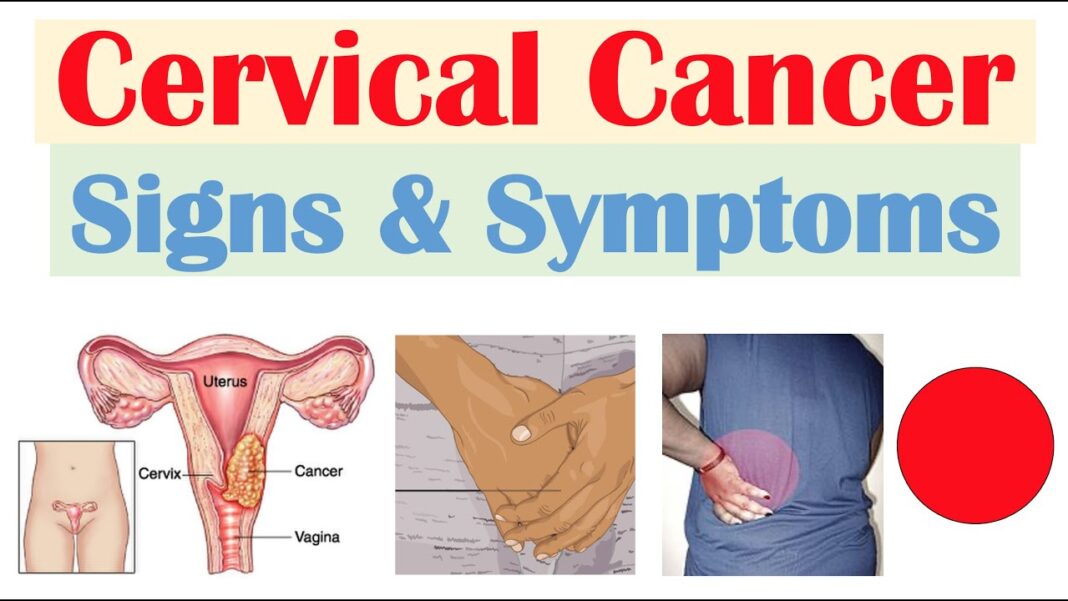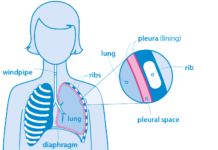
Typical cervical cancer symptoms are:
- unusual bleeding, like in between periods, after sex, or after menopause
- vaginal discharge that looks or smells different than usual
- pain in the pelvis
- needing to urinate more often
- pain during urination
If you notice any of these symptoms, see your doctor for an exam. Find out how your doctor will diagnose cervical cancer.
Most cervical cancer cases are caused by the sexually transmitted human papillomavirus (HPV). This is the same virus that causes genital warts.
There are about 100 different strains of HPV. Only certain types cause cervical cancer. The two types that most commonly cause cancer are HPV-16 and HPV-18.
Being infected with a cancer-causing strain of HPV doesn’t mean you’ll get cervical cancer. Your immune system eliminates the vast majority of HPV infections, often within 2 years.
HPV can also cause other cancers in women and men. These include:
- vulvar cancer
- vaginal cancer
- penile cancer
- anal cancer
- rectal cancer
- throat cancer
HPV is a very common infection. Find out what percentage of sexually active adults will get it at some point in their lifetime.
After you’ve been diagnosed, your doctor will assign your cancer a stage. The stage tells whether the cancer has spread, and if so, how far it’s spread. Staging your cancer can help your doctor find the right treatment for you.
Cervical cancer has four stages:
- Stage 1: The cancer is small. It may have spread to the lymph nodes. It hasn’t spread to other parts of your body.
- Stage 2: The cancer is larger. It may have spread outside of the uterus and cervix or to the lymph nodes. It still hasn’t reached other parts of your body.
- Stage 3: The cancer has spread to the lower part of the vagina or to the pelvis. It may be blocking the ureters, the tubes that carry urine from the kidneys to the bladder. It hasn’t spread to other parts of your body.
- Stage 4: The cancer may have spread outside of the pelvis to organs like your lungs, bones, or liver.
A Pap smear is a test doctors use to diagnose cervical cancer. To perform this test, your doctor collects a sample of cells from the surface of your cervix. These cells are then sent to a lab to be tested for precancerous or cancerous changes.
If these changes are found, your doctor may suggest a colposcopy, a procedure for examining your cervix. During this test, your doctor might take a biopsy, which is a sample of cervical cells.
The U.S. Preventive Services Task ForceTrusted Source recommends the following screening schedule for women by age:
- Ages 21 to 29: Get a Pap smear once every 3 years.
- Ages 30 to 65: Get a Pap smear once every 3 years, get a high-risk HPV (hrHPV) test every 5 years, or get a Pap smear plus hrHPV test every 5 years.
Do you need a Pap smear? Learn what to expect during a Pap test.
HPV is the biggest risk for cervical cancer. Other factors that can also increase your risk include:
- HIV
- chlamydia
- smoking
- obesity
- a family history of cervical cancer
- a diet low in fruits and vegetables
- taking birth control pills
- having three full-term pregnancies
- being younger than 17 when you got pregnant for the first time
Even if you have one or more of these factors, you’re not destined to get cervical cancer. Learn what you can start doing right now to reduce your risk.
For cervical cancer that’s caught in the early stages, when it’s still confined to the cervix, the 5-year survival rate is 92 percentTrusted Source.
Once the cancer has spread within the pelvic area, the 5-year survival rate drops to 56 percentTrusted Source. If the cancer spreads to distant parts of the body, survival is just 17 percentTrusted Source.
Routine testing is important for improving the outlook of women with cervical cancer. When this cancer is caught early, it’s very treatable.
Several different types of surgery treat cervical cancer. Which one your doctor recommends depends on how far the cancer has spread.
- Cryosurgery freezes cancer cells with a probe placed in the cervix.
- Laser surgery burns off abnormal cells with a laser beam.
- Conization removes a cone-shaped section of the cervix using a surgical knife, laser, or a thin wire heated by electricity.
- Hysterectomy removes the entire uterus and cervix. When the top of the vagina is also removed, it’s called a radical hysterectomy.
- Trachelectomy removes the cervix and the top of the vagina, but leaves the uterus in place so that a woman can have children in the future.
- Pelvic exenteration may remove the uterus, vagina, bladder, rectum, lymph nodes, and part of the colon, depending on where the cancer has spread.
One of the easiest ways to prevent cervical cancer is by getting screened regularly with a Pap smear or hrHPV test. Screening picks up precancerous cells, so they can be treated before they turn into cancer.
HPV infection causes most cervical cancer cases. The infection is preventable with the vaccines Gardasil and Cervarix. Vaccination is most effective before a person becomes sexually active. Both boys and girls can be vaccinated against HPV.
Here are a few other ways you can reduce your risk of HPV and cervical cancer:
- limit the number of sexual partners you have
- always use a condom or other barrier method when you have vaginal, oral, or anal sex
An abnormal Pap smear result indicates you have precancerous cells in your cervix. Find out what to do if your test comes back positive.
Here are some key statistics about cervical cancer.
The American Cancer SocietyTrusted Source estimates that in 2022, approximately 14,100 American women will be diagnosed with cervical cancer, and 4,280 will die from the disease. Most cases will be diagnosed in people with a cervix between the ages of 35 and 44.
Hispanic women are the most likely ethnic group to get cervical cancer in the United States. American Indians and Alaskan natives have the lowest rates.
The death rate from cervical cancer has dropped over the years. From 2002 to 2016, the number of deaths was 2.3 per 100,000 womenTrusted Source per year. In part, this decline was due to improved screening.
It’s rare to get diagnosed with cervical cancer while you’re pregnant, but it can happen. Most cancers found during pregnancy are discovered at an early stage.
Treating cancer while you’re pregnant can be complicated. Your doctor can help you decide on a treatment based on the stage of your cancer and how far along you’re in your pregnancy.
If the cancer is at a very early stage, you may be able to wait to deliver before starting treatment. For a case of more advanced cancer where treatment requires a hysterectomy or radiation, you’ll need to decide whether to continue the pregnancy. Doctors will try to deliver your baby as soon as it can survive outside the womb.






